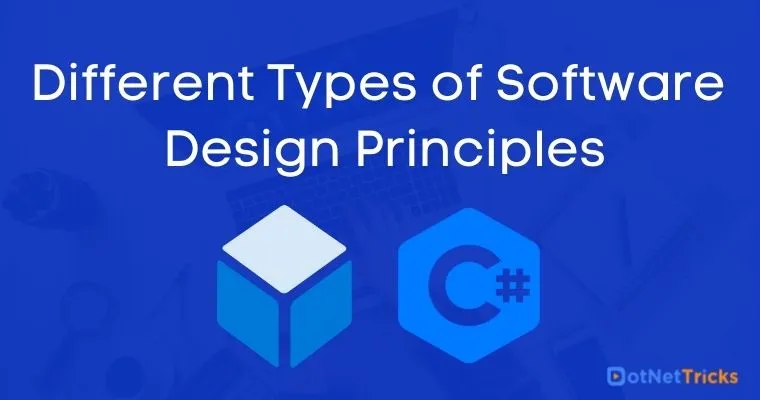25
AprDifferent Types of Software Design Principles

⭐ .NET Design Patterns Course: Design Patterns in C# Online Training
Different Types of Software Design Principles: An Overview
Software design is also the process of planning or converting software requirements into the steps required to construct a software system. There are various principles for organizing and arranging the structural components of software design. Software designs that incorporate these concepts have a long-term impact on the software's content and operation. If you want to learn effective software design strategies, check out our complete Design Pattern Tutorial for great insights and practical advice.
Key Software Design Principles
Software design principles are a set of guidelines that help developers to make a good system design. The most important principle is the SOLID principle. The key software design principles are as follows:
1. SOLID
It is a combination of five basic designing principles.
Single Responsibility Principle (SRP)
This principle states that there should never be more than one reason for a class to change. This means that you should design your classes in such a way that each class should have a single purpose.
Example - An Account class is responsible for managing Current and Saving Accounts but a CurrentAccount and SavingAccount classes would be responsible for managing current and saving accounts respectively. Hence both are responsible for a single purpose only. Hence we are moving towards specialization.
Open/Closed Principle (OCP)
This principle states that software entities (classes, modules, functions, etc.) should be open for extension but closed for modification. The "closed" part of the rule states that once a module has been developed and tested, the code should only be changed to correct bugs. The "open" part says that you should be able to extend existing code to introduce new functionality.
Example – A PaymentGateway base class contains all basic payment-related properties and methods. This class can be extended by different PaymentGateway classes for different payment gateway vendors to achieve their functionalities. Hence it is open for extension but closed for modification.
Liscov Substitution Principle (LSP)
This principle states that functions that use pointers or references to base classes must be able to use objects of derived classes without knowing it.
Example - Assume that you have an inheritance hierarchy with Person and Student. Wherever you can use Person, you should also be able to use a Student, because Student is a subclass of Person.
Interface Segregation Principle (ISP)
This principle states that Clients should not be forced to depend upon interfaces that they don’t use. This means the number of members in the interface that is visible to the dependent class should be minimized.
Example - The service interface that is exposed to the client should contain only client-related methods not all.
Dependency Inversion Principle (DIP)
The Dependency Inversion Principle states that:
High-level modules should not depend upon low-level modules. Both should depend upon abstractions.
Abstractions should not depend upon details. Details should depend upon abstractions.
It helps us to develop loosely coupled code by ensuring that high-level modules depend on abstractions rather than concrete implementations of lower-level modules. The Dependency Injection pattern is an implementation of this principle
Example - The Dependency Injection pattern is an implementation of this principle
2. DRY (Don’t Repeat Yourself)
This principle states that each small piece of knowledge (code) may only occur exactly once in the entire system. This helps us to write scalable, maintainable, and reusable code.
Example – Asp.Net MVC framework works on this principle.
3. KISS (Keep it simple, Stupid!)
This principle states that try to keep each small piece of software simple and unnecessary complexity should be avoided. This helps us to write easy maintainable code.
4. YAGNI (You ain't gonna need it)
This principle states that always implement things when you need them and never implement things before you need them.
Read More Articles Related to Design patternsSummary
SOLID, DRY, KISS, & YAGNI are principles that are essential for successful software design. SOLID principles ensure that code is maintainable and flexible, while DRY encourages reuse, and KISS and YAGNI emphasize eliminating needless complexity and features. By adhering to these principles, developers can construct resilient software that fulfills present requirements without overengineering for the future.






